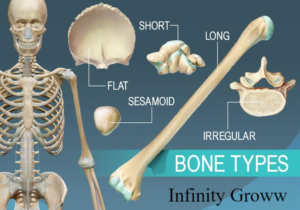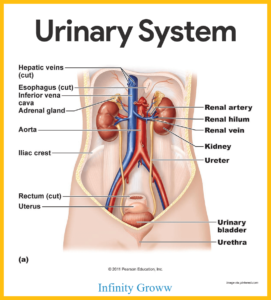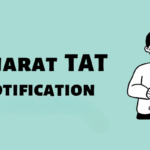Table of Contents
- Introduction
1.1 A Vital System of Life
1.2 Nature’s Transportation Network
1.3 The Heart of the Matter
1.4 Blood Vessels: The Body’s Highway
1.5 The Liquid of Life: Blood
1.6 A World of Challenges: Circulatory System Diseases - The Heart: The Engine of Life
2.1 Structure and Function of the Heart
2.2 The Cardiac Cycle
2.3 Heart Valves: Gatekeepers of Circulation
2.4 Heart Health and Maintenance - Blood Vessels: Navigating the Body
3.1 Arteries: Oxygen Delivery Routes
3.2 Veins: The Return Path
3.3 Capillaries: The Microscopic Bridges
3.4 Blood Pressure and Vessel Health
3.5 Circulatory System in Action - Blood: The Liquid of Life
4.1 Composition of Blood
4.2 Red Blood Cells: Oxygen Couriers
4.3 White Blood Cells: Guardians of Health
4.4 Platelets: Clotting Agents
4.5 Plasma: The Fluid Medium - Common Circulatory System Diseases
5.1 Hypertension (High Blood Pressure)
5.2 Atherosclerosis: The Silent Threat
5.3 Coronary Artery Disease
5.4 Heart Failure
5.5 Stroke: The Brain’s Crisis
5.6 Other Circulatory Disorders - Conclusion
6.1 The Intricate Symphony of Life
6.2 Caring for Your Circulatory System
6.3 A Lifelong Journey of Health
Introduction : The Circulatory System
The circulatory system, also known as the cardiovascular system, is the lifeline that sustains us from the moment we take our first breath until the end of our days. This complex and wondrous system is responsible for keeping our bodies nourished, oxygenated, and free of waste. In this article, we will take insight into the functions of the circulatory system, explore its main components, and shed light on some common diseases associated with each part and the system as a whole.
We’ll also discuss common circulatory system diseases and their symptoms, highlighting the critical role this system plays in our overall well-being. Join us on a journey to understand the marvel of the circulatory system, the engine of life.

1.1 A Vital System of Life
The circulatory system, also known as the cardiovascular system, is nothing short of a vital system of life. It serves as the body’s transportation network, carrying out the essential functions of delivering oxygen and nutrients to cells while removing waste and carbon dioxide. This intricate system is fundamental to our survival, ensuring that every part of our body receives the resources it needs to function optimally.
1.2 Nature’s Transportation Network
Think of the circulatory system as nature’s own transportation network, a finely tuned system that rivals any man-made infrastructure. In this biological network, arteries act as highways, carrying oxygen-rich blood away from the heart to the body’s various regions. Veins, on the other hand, serve as return routes, bringing oxygen-depleted blood back to the heart. Capillaries, the tiniest vessels, act as connectors, enabling the exchange of essential resources and waste products between the blood and the body’s cells.
1.3 The Heart of the Matter
At the very core of the circulatory system lies the heart, a remarkable organ that works tirelessly throughout our lives. It is essentially the engine that propels this network. The heart consists of four chambers: two atria and two ventricles, which work in harmony to pump blood to all corners of the body. Understanding the structure and function of the heart is key to comprehending the elegance of the circulatory system.
1.4 Blood Vessels: The Body’s Highway
Blood vessels play a crucial role in guiding the flow of blood throughout the body, acting as the system’s highways and byways. Arteries are responsible for carrying oxygen-rich blood, while veins return oxygen-depleted blood to the heart. Capillaries form the microscopic bridges, facilitating the exchange of nutrients and gases between the blood and the body’s cells. The health of these vessels is essential for the efficient functioning of the circulatory system.
1.5 The Liquid of Life: Blood
Blood is the life-sustaining liquid within the circulatory system, composed of various components. Red blood cells are the oxygen couriers, white blood cells serve as guardians of health, platelets aid in clotting, and plasma acts as the fluid medium. Together, these components ensure the delivery of oxygen and nutrients, the defense against infections, and the maintenance of a stable internal environment.
1.6 A World of Challenges: Circulatory System Diseases
While the circulatory system is a marvel of design, it is not invulnerable to diseases. This section explores common circulatory system diseases, such as hypertension (high blood pressure), atherosclerosis, coronary artery disease, heart failure, stroke, and other disorders. Understanding these diseases and their symptoms is essential for recognizing their presence and seeking appropriate medical attention for a healthier life.
The Heart: The Engine of Life
2.1 Structure and Function of the Heart
The heart is the central, pulsating engine of the circulatory system. Understanding its structure and function is fundamental to grasping the significance of this vital organ.
Structure of the Heart:
- The human heart is a muscular, cone-shaped organ located in the chest.
- It is roughly the size of a closed fist and weighs around 250 to 350 grams.
- The heart is divided into four chambers: two atria (right and left) and two ventricles (right and left).
- The atria receive blood, while the ventricles pump it out to the body and lungs.
- The heart is enclosed in a protective sac called the pericardium.
Function of the Heart:
- The heart serves as a dual pump, with the right side pumping blood to the lungs for oxygenation and the left side pumping oxygenated blood to the rest of the body.
- The right atrium receives deoxygenated blood from the body and pumps it into the right ventricle.
- The right ventricle then sends this blood to the lungs for oxygenation.
- The oxygenated blood returns to the left atrium, which pumps it into the left ventricle.
- The left ventricle’s powerful contraction propels the oxygen-rich blood to the body, ensuring that all cells receive the vital nutrients and oxygen they need.

2.2 The Cardiac Cycle
The heart operates on a continuous cycle known as the cardiac cycle. This rhythmic sequence of events ensures that blood flows efficiently through the heart and circulates throughout the body.
Phases of the Cardiac Cycle:
- The cardiac cycle consists of two main phases: systole and diastole.
- Systole: This is the contraction phase when the heart pumps blood. During ventricular systole, the ventricles contract, forcing blood out of the heart.
- Diastole: This is the relaxation phase when the heart fills with blood. During ventricular diastole, the ventricles relax and fill with blood from the atria.
Cardiac Cycle in Action:
- The cardiac cycle begins with the opening of the atrioventricular (AV) valves, allowing blood to flow from the atria to the ventricles.
- As the ventricles contract, the AV valves close to prevent backflow into the atria.
- The semilunar valves at the base of the arteries leading from the heart open, allowing blood to be ejected into the pulmonary artery and aorta.
- Once the ventricles relax, the semilunar valves close to prevent blood from flowing back into the heart.
- This rhythmic process repeats with each heartbeat, ensuring a continuous flow of blood throughout the body.
2.3 Heart Valves: Gatekeepers of Circulation
Heart valves play a crucial role in regulating blood flow through the heart and ensuring unidirectional movement.
Types of Heart Valves:
- There are two types of heart valves: atrioventricular (AV) valves and semilunar valves.
- The AV valves, including the tricuspid and bicuspid (mitral) valves, separate the atria from the ventricles.
- The semilunar valves, the aortic and pulmonary valves, are situated at the base of the aorta and pulmonary artery, respectively.
Function of Heart Valves:
- AV valves open during diastole, allowing blood to flow from the atria to the ventricles.
- During ventricular systole, the AV valves close to prevent backflow into the atria.
- Semilunar valves open during ventricular systole, enabling blood to be ejected into the aorta and pulmonary artery.
- After the ventricles relax, the semilunar valves close, preventing blood from flowing back into the heart.
2.4 Heart Health and Maintenance
Maintaining heart health is crucial for the proper functioning of the circulatory system. Adopting a healthy lifestyle and seeking regular medical check-ups can significantly impact heart health.
Promoting Heart Health:
- A balanced diet rich in fruits, vegetables, lean proteins, and whole grains is essential for maintaining heart health.
- Regular physical activity helps strengthen the heart and improve overall cardiovascular fitness.
- Avoiding smoking and excessive alcohol consumption significantly reduces the risk of heart disease.
- Managing stress and getting adequate sleep are also vital for heart health.
Cardiovascular Diseases:
- Several factors, including poor diet, sedentary lifestyle, genetics, and smoking, contribute to the development of cardiovascular diseases.
- Cardiovascular diseases, such as atherosclerosis, hypertension, and heart disease, can be prevented or managed through early detection and lifestyle changes.
By understanding the structure and function of the heart, the cardiac cycle, the role of heart valves, and the importance of heart health, individuals can take proactive steps to maintain a healthy circulatory system and, ultimately, lead a healthier life.
Blood Vessels: Navigating the Body
3.1 Arteries: Oxygen Delivery Routes
Arteries are the crucial highways within the circulatory system, responsible for delivering oxygenated blood from the heart to various parts of the body.
Structure and Function of Arteries:
- Arteries are blood vessels with thick, muscular walls that allow them to withstand the high pressure generated by the heart’s contractions.
- The primary function of arteries is to transport oxygen-rich blood away from the heart and to the body’s tissues and organs.
- Major arteries, such as the aorta, branch into smaller arteries that progressively decrease in size, ensuring the even distribution of oxygenated blood.
3.2 Veins: The Return Path
Veins serve as the return routes in the circulatory system, bringing deoxygenated blood back to the heart.
Structure and Function of Veins:
- Veins are blood vessels with thinner walls and larger lumens compared to arteries, as they operate under lower pressure.
- Their primary function is to collect deoxygenated blood from the body’s tissues and organs and return it to the heart for reoxygenation.
- Veins have one-way valves that prevent the backward flow of blood and ensure unidirectional movement towards the heart.
3.3 Capillaries: The Microscopic Bridges
Capillaries are the tiniest blood vessels in the circulatory system, serving as connectors between arteries and veins.
Structure and Function of Capillaries:
- Capillaries are one cell layer thick, allowing for the efficient exchange of oxygen, nutrients, and waste products between the blood and body’s cells.
- They form an intricate network, ensuring that every cell in the body is in close proximity to a capillary.
- This proximity enables the exchange of oxygen and nutrients from the blood into the cells and the removal of waste products, such as carbon dioxide.
3.4 Blood Pressure and Vessel Health
Maintaining proper blood pressure and vessel health is essential for the efficient functioning of the circulatory system.
Blood Pressure:
- Blood pressure is the force exerted by blood against the walls of the arteries.
- It is measured using two values: systolic pressure (pressure during ventricular contraction) and diastolic pressure (pressure when the heart is at rest).
- High blood pressure (hypertension) can strain blood vessels and lead to cardiovascular problems.
Vessel Health:
- Vessel health is crucial for ensuring proper blood flow and preventing conditions such as atherosclerosis (hardening of the arteries) and blood clot formation.
- A healthy lifestyle, including a balanced diet, regular exercise, and avoiding smoking, can promote vessel health.
3.5 Circulatory System in Action
Understanding how the circulatory system operates in real-time is key to comprehending its significance in maintaining overall health.
Circulation of Blood:
- The circulatory system’s operation can be likened to a continuous loop.
- Oxygen-rich blood is pumped from the heart to the body’s tissues through arteries.
- Capillaries facilitate the exchange of oxygen, nutrients, and waste products with cells.
- Deoxygenated blood returns to the heart via veins.
- The heart then pumps this blood to the lungs for oxygenation before sending it back to the body.
By comprehending the roles of arteries, veins, and capillaries, recognizing the importance of maintaining proper blood pressure and vessel health, and understanding how the circulatory system operates, individuals can take steps to ensure the efficient functioning of this critical system and promote their overall well-being.

Blood: The Liquid of Life
4.1 Composition of Blood
Blood is a complex fluid with a composition that ensures it can carry out its vital functions effectively.
Blood Components:
- Blood is composed of various components, including red blood cells, white blood cells, platelets, and plasma.
- These components work together to perform critical roles in the body, including oxygen transport, immune defense, and clotting.
4.2 Red Blood Cells: Oxygen Couriers
Red blood cells are essential for the transport of oxygen throughout the body.
Structure and Function of Red Blood Cells:
- Red blood cells, also known as erythrocytes, are small, biconcave, disk-shaped cells.
- They contain hemoglobin, a protein that binds to oxygen and carries it from the lungs to the body’s tissues.
- Red blood cells are continuously produced in the bone marrow and have a lifespan of about 120 days.
4.3 White Blood Cells: Guardians of Health
White blood cells are responsible for protecting the body against infections and foreign invaders.
Types and Functions of White Blood Cells:
- White blood cells, or leukocytes, come in several types, including neutrophils, lymphocytes, monocytes, eosinophils, and basophils.
- They play a crucial role in the immune response, identifying and destroying bacteria, viruses, and other pathogens.
- White blood cells are produced in the bone marrow and circulate throughout the bloodstream, patrolling the body to detect and combat infections.

4.4 Platelets: Clotting Agents
Platelets are tiny cell fragments that play a vital role in the blood clotting process.
Platelets and Hemostasis:
- Platelets are essential for the formation of blood clots, which prevent excessive bleeding when a blood vessel is damaged.
- When an injury occurs, platelets adhere to the site and release substances that initiate the clotting process.
- They interact with proteins in the blood to form a stable clot, sealing the wound and preventing further blood loss.
4.5 Plasma: The Fluid Medium
Plasma is the liquid component of blood and serves as a medium for transporting blood cells and various substances.
Composition and Functions of Plasma:
- Plasma is a pale yellow fluid that makes up the largest portion of blood.
- It contains water, electrolytes, proteins, hormones, waste products, and nutrients.
- Plasma functions as a transport medium, carrying blood cells and substances like glucose, hormones, and waste products to and from different parts of the body.
Understanding the composition and functions of blood components, such as red blood cells, white blood cells, platelets, and plasma, is essential for appreciating the intricate roles they play in maintaining overall health and ensuring the circulatory system operates efficiently.
Common Circulatory System Diseases
5.1 Hypertension (High Blood Pressure)
Hypertension, commonly known as high blood pressure, is a prevalent condition with significant implications for heart and circulatory health.
Definition and Causes:
- Hypertension refers to consistently elevated blood pressure, typically measured as systolic (when the heart contracts) and diastolic (when the heart is at rest) pressure.
- Primary causes of hypertension include genetics, unhealthy lifestyle choices, such as poor diet and lack of exercise, and factors like age and gender.
Symptoms and Effects:
- Hypertension is often referred to as the “silent killer” because it may not present noticeable symptoms until it reaches severe stages.
- If left uncontrolled, hypertension can lead to a range of health issues, including an increased risk of heart disease, stroke, and kidney problems.
5.2 Atherosclerosis: The Silent Threat
Atherosclerosis is a progressive condition where arteries become narrow and hardened due to the buildup of plaque.
Formation of Plaque:
- Atherosclerosis begins with the accumulation of cholesterol, fat, and other substances on the inner walls of arteries.
- Over time, this plaque hardens and narrows the arteries, reducing blood flow and increasing the risk of blood clots.
Consequences and Complications:
- Atherosclerosis can lead to angina (chest pain), heart attacks, strokes, and peripheral artery disease.
- Lifestyle modifications and medical interventions can help manage and prevent the progression of atherosclerosis.
5.3 Coronary Artery Disease
Coronary artery disease (CAD) involves the narrowing or blockage of coronary arteries, the blood vessels that supply the heart muscle with oxygen and nutrients.
Causes and Risk Factors:
- CAD is primarily caused by atherosclerosis, which restricts blood flow to the heart.
- Risk factors include high blood pressure, high cholesterol, smoking, and diabetes.
Symptoms and Complications:
- Symptoms of CAD can include angina, shortness of breath, and heart attacks.
- Managing CAD often involves lifestyle changes, medications, and, in some cases, surgical interventions like angioplasty or bypass surgery.
5.4 Heart Failure
Heart failure occurs when the heart is unable to pump blood effectively to meet the body’s needs.
Types of Heart Failure:
- Heart failure can be categorized as either systolic heart failure (weakened heart muscle) or diastolic heart failure (stiff heart muscle).
- Common causes include coronary artery disease, hypertension, and certain heart conditions.
Symptoms and Treatment:
- Symptoms may include fatigue, shortness of breath, and fluid retention.
- Management includes lifestyle changes, medications, and, in severe cases, heart transplantation.
5.5 Stroke: The Brain’s Crisis
A stroke is a sudden interruption of blood flow to the brain, leading to brain cell damage.
Types of Stroke:
- Ischemic stroke is caused by a blocked blood vessel in the brain, often due to a blood clot.
- Hemorrhagic stroke occurs when a blood vessel in the brain ruptures.
Symptoms and Impact:
- Stroke symptoms can include sudden numbness, confusion, trouble speaking, and severe headaches.
- Strokes can result in significant disabilities and even be life-threatening.
5.6 Other Circulatory Disorders
This category encompasses a range of less common but significant circulatory disorders, including peripheral artery disease, heart arrhythmias, and congenital heart defects.
Peripheral Artery Disease (PAD):
- PAD is a condition in which arteries outside the heart and brain become narrowed or blocked.
- Symptoms often involve pain or cramping in the legs during physical activity.
Heart Arrhythmias:
- Heart arrhythmias are irregular heartbeats, which can be too fast, too slow, or irregular.
- They can lead to various symptoms, including palpitations, dizziness, and fainting.
Congenital Heart Defects:
- Congenital heart defects are structural problems with the heart present at birth.
- They can vary from simple issues that don’t require treatment to complex conditions that may necessitate surgery.
Understanding and recognizing these common circulatory system diseases is essential for early diagnosis and effective management. Lifestyle changes, medications, and medical interventions play crucial roles in preventing and treating these conditions, ultimately improving overall circulatory health.
Conclusion :
6.1 The Intricate Symphony of Life
The circulatory system, often referred to as the body’s lifeline, is a remarkable and intricate symphony of biological processes. It orchestrates the flow of blood, ensuring that oxygen and essential nutrients are delivered to every cell, while removing waste and carbon dioxide. The interplay of the heart, blood vessels, blood cells, and various components creates a symphony that allows us to lead vibrant lives. Understanding this symphony is essential for appreciating the profound significance of the circulatory system in sustaining life.
6.2 Caring for Your Circulatory System
Caring for your circulatory system is an essential part of maintaining overall health and well-being. It starts with a commitment to a healthy lifestyle, including a balanced diet, regular physical activity, and avoiding habits like smoking that can harm your heart and blood vessels. Regular check-ups with healthcare professionals can help monitor your heart health and identify potential issues early. Managing risk factors, such as high blood pressure and high cholesterol, is crucial for preventing circulatory system diseases. By taking an active role in caring for your circulatory system, you can contribute to a longer and healthier life.
6.3 A Lifelong Journey of Health
Your circulatory system is a partner on your lifelong journey of health. It requires attention, care, and respect. This journey involves making choices that prioritize your heart and circulatory health at every stage of life. From childhood through to the golden years, the circulatory system plays a vital role in enabling you to lead a fulfilling and active life. Embrace this journey by understanding the importance of a healthy circulatory system and taking steps to ensure its well-being. By doing so, you can look forward to a life of vitality, longevity, and quality health.







